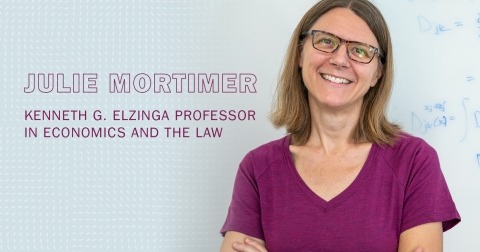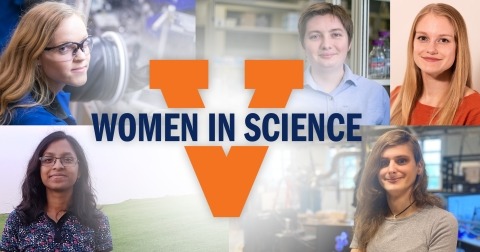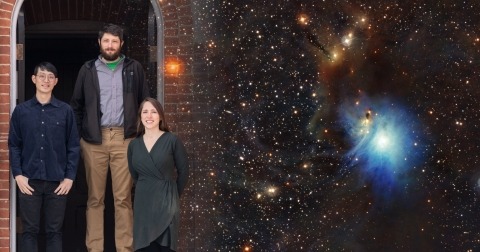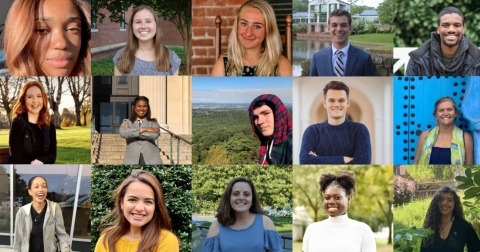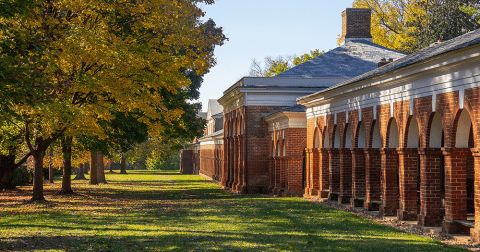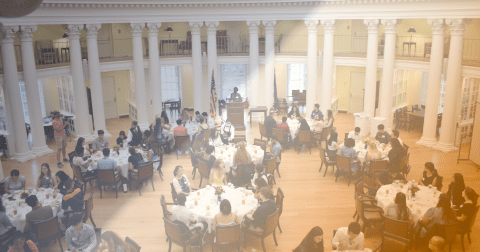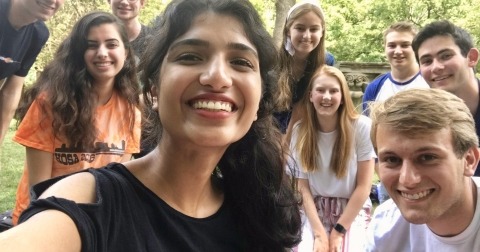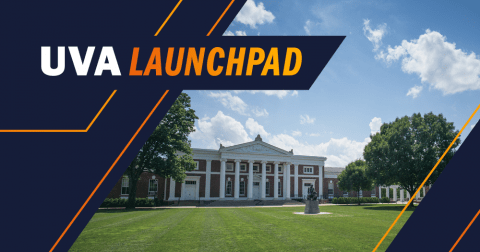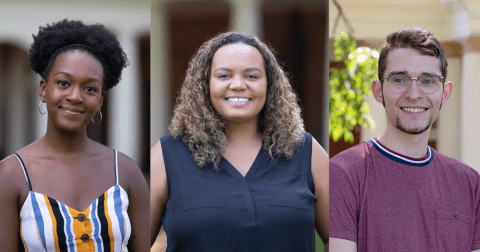Astronomy Undergraduate Takes Research to New Heights

Bridget Andersen
Last August, after midnight, in the darkness of a field somewhere in Senegal, Bridget Andersen (Astronomy/Physics ’18) waited. Recently graduated, with a double major in astronomy/physics and computer science, she would soon be heading to McGill University in Montreal to pursue a master’s degree in astrophysics. But at that hour, in that field, her focus was the night sky above and a speck of light so small and so distant that it wasn’t even visible to the naked eye. She was waiting for the moment—less than a second in length—when that light would wink out.
Andersen was part of a team from UVA led by astronomy professors Michael Skrutskie and Anne Verbiscer, that had joined that week in Senegal with an international group of scientists and students. That night, strung like a dotted north-to-south line across some 100 kilometers, the researchers were there to capture an “occultation”: the moment when an object in space passes in front of—and briefly blocks the light from—a star.
In this case, that object was an ancient icy chunk known as MU69, only about 18 miles in width, in orbit some 4 billion miles from Earth, a billion miles beyond Pluto. And incredibly, information gleaned from the split-second observations the researchers recorded ultimately will help guide NASA’s New Horizons spacecraft, launched in 2006, close enough to MU69 to photograph it. Taking place shortly after midnight on New Year’s Eve, that flyby and its results were awaited by the astronomy world with anticipation as breathless as you can get for an event nearly 13 years in the making.
“Nothing has ever been observed at close range this far away from the Sun or the Earth using instruments sent by the Earth,” says Verbiscer.
For Andersen, the post-graduation trip to Senegal capstoned a range of research opportunities she’d been able to pursue during her years in the College that ultimately led her to an interest in radio astronomy, which is her focus at McGill. There, she is studying “fast radio bursts,” vanishingly brief bursts of radio energy that “seemingly come from random places in the sky,” Andersen says. “They are this huge mystery in astronomy.” In fact, so few have been discovered that until recently, says Andersen, theories about what they might be have outnumbered the actual ones identified. “That’s so exciting to me, that there is something so completely mysterious out there.”
This constant confrontation with the limits of knowledge, with measures of time and distance so vast that they defy grasping without reaching for analogy and metaphor—do astronomers ever feel a bit … overwhelmed by it all?
“It really does bring a perspective that in some ways we are insignificant,” says Andersen. “But in some ways, the fact that we are asking these questions, the fact that we can think about these things, is kind of amazing, and can give you more appreciation for humanity.”




